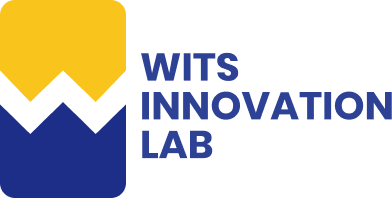Published - a year ago | 12 min read
Is Your Business Growing Faster Than Your Tech Team Can Handle?
Growth is often the ultimate goal for any business. However, growth can also be a double-edged sword, particularly if your tech team can't keep up with the pace. In today's digitally-driven business environment, having a robust, agile, and capable tech team isn't a luxury—it's a necessity. But what happens when your business is growing at an astronomical rate, and your tech team appears to be gasping for air? Let's delve into the challenges and the key performance indicators (KPIs) that signal whether your tech team is lagging behind your business expansion.
The Hallmarks of Overburdened Tech Teams

When your business experiences the windfall of unprecedented growth, it's like sailing a ship in favoring winds. The sails are full, the sky is clear, and you're moving at maximum speed towards your goals. But let's imagine for a moment that your tech team is the engine room of this ship. What happens when the engines aren't equipped to keep pace with the vessel's velocity? The signs of an overburdened tech team are similar to the symptoms of an overheating engine: disruptions, degraded performance, and delays in meeting objectives.
1. Unpredictable System Outages
Starting with unpredictable system outages, we are in an era where uptime is the currency of good business. In a digitally connected world, even a few minutes of downtime can translate into significant financial losses and erode customer trust. Unplanned outages can also ripple outwards, causing disruptions in the supply chain, compromising data integrity, and triggering contractual liabilities with third-party service providers. It's worth noting that system outages are often a symptom of deeper structural issues—lack of redundancy, poor load balancing, or absence of real-time monitoring. If your tech team is stretched too thin, they'll likely patch problems reactively instead of solving them proactively. The result is a precarious IT environment where failures become possible and increasingly probable.
2. Declining Quality of Code
The declining code quality is another pressing issue that doesn't merely stay confined to the tech department but leaks into the business. When your tech team is overwhelmed, they are more likely to take shortcuts—bypassing best practices, skimping code reviews, and overlooking rigorous testing. This creates an insidious form of technical debt, a compound interest of future work that piles up in the backlog. Unlike financial debt, however, technical debt is often invisible until it becomes unmanageable. High bug density is a drain on resources as it diverts critical time and attention away from innovation and toward firefighting. Poor code quality can expose the business to security vulnerabilities, making you an easier target for cyberattacks. In the long run, these compromises can severely affect market competitiveness as your development cycles get longer, feature releases lag, and customer satisfaction plummets.
3. Sluggish Response to Business Needs
Finally, let's talk about the sluggish response to business needs, perhaps the most insidious sign that your tech team is not keeping pace. In today's agile and fast-paced business environment, speed and flexibility are virtues and imperatives. Any delay in rolling out new features, applying critical security patches, or adapting to market changes can result in lost opportunities and give your competitors an advantage. Even more concerning is that these delays can have a cascading effect on the morale and productivity of other departments.
Suppose the sales team can't get the new pricing module promised, or the marketing team can't launch a campaign because the requisite APIs are not ready. In that case, the resulting bottlenecks can become organization-wide pain points. Moreover, a sluggish tech team impacts the business's ability to pivot or adapt to unexpected circumstances, making the company less resilient and more susceptible to market volatility.
Suppose the sales team can't get the new pricing module promised, or the marketing team can't launch a campaign because the requisite APIs are not ready. In that case, the resulting bottlenecks can become organization-wide pain points. Moreover, a sluggish tech team impacts the business's ability to pivot or adapt to unexpected circumstances, making the company less resilient and more susceptible to market volatility.
Unveiling the Bottlenecks: Diagnostic Metrics

When we talk about diagnosing bottlenecks within a tech team, we are essentially discussing the health of the technical backbone of your enterprise. Think of it like a medical examination for your tech department, where the parameters under scrutiny are not cholesterol levels or blood pressure but metrics like Cycle Time, Work-in-Progress (WIP) Limits, and Technical Debt Ratio. These metrics act as an X-ray into the structural integrity of your tech team's operations. Let's dissect each one to understand its implications.
1. Cycle Time
Cycle time essentially measures the pulse of your software development lifecycle. It quantifies a code snippet or feature duration to navigate through the development pipeline and get deployed into production. While often dismissed as a mere development concern, an increasing cycle time can set off alarm bells across business operations. Imagine your sales team securing a client who is impressed by a prototype and eager for its launch. If your cycle time is escalating, that launch date becomes increasingly elusive. The sales team faces client discontent, your project calendar gets upended, and your revenue forecasts veer off course. A prolonged cycle time implies that the tech team has become a bottleneck, and the backlog of code awaiting deployment piles up. This is not just an operational delay; it transforms into a strategic impediment that can cripple your business agility.
2. Work-in-Progress (WIP) Limits
When looking at WIP limits, you're essentially peering into the efficiency engine of your tech team. The WIP metric sheds light on the queue of pending tasks, which, in an overburdened team, is likely growing like an unchecked weed. Imagine a highway with only three lanes, but there are enough cars to fill a six-lane freeway. The result? A traffic jam. In the context of your tech team, each unfinished task is like a car in this jam, causing hindrance and slowing everything down. What makes this especially concerning is the phenomenon known as "task-switching." As the queue lengthens, developers may be forced to switch from one task to another before completing any task, aiming to keep multiple projects 'alive.' Unfortunately, this dilutes focus and is a recipe for inefficiency and errors. A backlog of tasks is not merely a sign that your tech team is overworked; it's an indicator that they are working ineffectively, a far more chronic ailment.
3. Technical Debt Ratio
Lastly, the Technical Debt Ratio serves as a litmus test for the quality of your technological assets. It's a crucial ratio that pits the time invested in debugging and maintenance against the time spent developing new features. The scale should tip in favor of new development in a well-balanced, efficiently running tech team. However, an increasing technical debt ratio is a clarion call for immediate intervention. A rising ratio indicates that the team is mired in the past, fixing legacy errors instead of forging ahead with new, revenue-generating features. As the team gets tangled in the web of past issues, the ability to innovate and drive the business forward takes a hit. It is the equivalent of running a race but continually stumbling over shoelaces that were not properly tied in the first place. The team loses time and the competitive edge necessary in today's fast-paced market.
What Leads to This Mismatch in Growth Rates?

The disparity between a business's growth rate and its tech team's ability to keep pace often emanates from deep-rooted, systemic issues that are more than just an operational bottleneck.
1. Lack of Scalable Infrastructure
One of the key drivers behind this mismatch is the lack of a scalable infrastructure. As your business starts to flourish, the technological demands grow exponentially. You may find yourself dealing with a larger volume of data, more transactions, and a greater need for computation power. Suppose your current infrastructure is not designed to accommodate this scale. In that case, the tech team gets caught in a constant loop of firefighting, scrambling to maintain uptime and performance. They divert their energies to managing a crumbling system rather than building new solutions that can drive the business forward. In essence, the team is forced into a reactionary mode, which hinders their creativity, agility, and, ultimately, their efficiency.
2. Inadequate Skill Set
The second aspect contributing to this mismatch is an inadequate skill set within the tech team. We're in an era where the technological landscape is not just evolving; it's metamorphosing at a breakneck speed. From new programming languages to game-changing frameworks and disruptive technologies like blockchain, AI, and quantum computing, a tech team must navigate a sea of innovations. If the skill set of your tech team remains stagnant, you're essentially trying to sail a modern, sophisticated ship with outdated navigation tools. They will struggle to implement efficient algorithms, manage data effectively, or even understand the best cybersecurity practices, causing a talent-resource mismatch. The team becomes a bottleneck, not because they aren't talented, but because their skills haven't kept pace with the rapid developments in the field. This sets off a chain reaction: their work starts to lag, and the business team gets impatient, leading to a vicious cycle of declining productivity and mounting frustration.
3. Absence of DevOps Culture
The absence of a DevOps culture further exacerbates the situation, adding another layer of complexity and inertia. DevOps is not just a buzzword; it's a culture that promotes collaboration between the development and operations teams. This approach fosters quicker development cycles, enables more reliable releases, and, most importantly, allows faster adaptation to market changes. DevOps is essentially designed to make a tech team agile and highly responsive to the needs of a growing business. In its absence, the tech team works in silos. The developers focus on writing code, often in a vacuum, not entirely aligned with the needs of the business or the challenges faced by the operations team. The operations team, on their part, struggles to keep the system running smoothly but may lack insight into how the code affects performance. The result is a slow, rigid tech team that becomes a bottleneck rather than an enabler of business growth.
Solutions: Scaling Your Tech Team with Your Business

The balance of power between your business growth and your tech team's capabilities is a critical nexus where success or failure often lies. While the diagnostic metrics and signs of an overburdened tech team paint a grim picture, the focus should also be on proactive solutions that can tip the scales in favor of efficiency and productivity. Here, we'll dissect various advanced strategies companies can adopt to ensure their tech teams keep up and thrive in an environment of rapid business expansion.
1. Transition to Microservices Architecture
When an organization is rooted in a monolithic architectural framework, it essentially lays a path for its tech team's impending limitations. In a monolithic setup, all project elements are intertwined, leading to a slow, cumbersome process to update or scale any system part. This becomes especially detrimental when rapid adaptability is the need of the hour. The transition to a microservices architecture addresses this issue at its core. Microservices disassemble the application into multiple independent modules that are loosely coupled. Each service is responsible for a specific business function and can be built, deployed, and scaled independently. This distributes the workload and makes it easier to manage the codebase. Developers can update a specific microservice without affecting the other parts of the application, thereby reducing the cycle time. Another potent advantage is that different microservices can be built using different technologies, offering the latitude to employ the most suitable technology stack for specific tasks. Therefore, microservices enable a modular, highly scalable architecture that aligns perfectly with rapid business growth.
2. Adopt SRE Practices
Site Reliability Engineering (SRE), an approach birthed by Google to meet the demands of large-scale, reliable services, combines aspects of software engineering and applies them to IT operations problems. The essential tenets of SRE are a set of protocols that create a symbiotic relationship between reliability, availability, and high performance. SRE prioritises automating operations and measuring reliability through key performance indicators such as Service Level Objectives (SLOs) and Service Level Indicators (SLIs). An SRE framework helps organisations make informed decisions about balancing new releases and stability by setting explicit benchmarks for service availability and other critical metrics. Applying SRE leads to a culture that rewards efficiency and aims at continuously reducing manual operations work. Such a culture is indispensable for tech teams that need to handle increasingly complex systems without exponentially inflating their team size or budget. Moreover, SRE's Incident Management protocols enhance real-time response capabilities, improving system resilience. Adopting SRE practices brings a data-driven, engineering-based approach to solving operations problems, turning them into a series of systematic, quantifiable challenges that can be efficiently managed, even as the business scales.
3. Upskilling and Reskilling
Site Reliability Engineering (SRE), an approach birthed by Google to meet the demands of large-scale, reliable services, combines aspects of software engineering and applies them to IT operations problems. The essential tenets of SRE are a set of protocols that create a symbiotic relationship between reliability, availability, and high performance. SRE prioritizes automating operations and measuring reliability through key performance indicators such as Service Level Objectives (SLOs) and Service Level Indicators (SLIs). An SRE framework helps organizations make informed decisions about balancing new releases and stability by setting explicit benchmarks for service availability and other critical metrics. Applying SRE leads to a culture that rewards efficiency and aims at continuously reducing manual operations work. Such a culture is indispensable for tech teams that need to handle increasingly complex systems without exponentially inflating their team size or budget. Moreover, SRE's Incident Management protocols enhance real-time response capabilities, improving system resilience. Adopting SRE practices brings a data-driven, engineering-based approach to solving operations problems, turning them into a series of systematic, quantifiable challenges that can be efficiently managed, even as the business scales.
4. Hire for Scalability
Finally, while existing teams are being trained and processes are being optimized, there also needs to be a focus on future hiring strategies. Scaling isn't just about increasing team size; it's about enriching the team with the right roles that can contribute directly to business growth. Traditional roles may not suffice when your organization has outgrown its initial phase. Specialized roles like Cloud Engineers, Data Scientists, or SRE specialists may become indispensable. When you hire for scalability, you're not just filling positions; you're strategically placing the right talent where they can offer maximum impact. This necessitates a shift in the recruitment mindset—from seeking employees who can do the job today to finding talent who can tackle tomorrow's challenges. Hiring for scalability is like chess—you're always thinking several moves ahead.
The Cost of Inaction

The Cost of Inaction in addressing the discrepancy between your rapidly growing business and a struggling tech team carries profound consequences beyond mere technical inefficiencies. When the tech team can't scale to meet the demand, you're essentially leaving money on the table—missed opportunities translate to revenue lost, potential partnerships squandered, and a tarnished brand reputation. It's a ripple effect that leads to decreased employee morale; when a team constantly feels like they're playing catch-up, the stress and the perception of underachievement can become overwhelming. A low morale environment is a hotbed for decreased productivity and a catalyst for increased turnover rates, resulting in a vicious cycle of more workload and inefficiency.
Then there's customer churn, a term that sends shivers down the spine of any business leader. In a digital world where user experience is king, any technological hiccup can drive your customers straight into the arms of your competitors. Slow load times, frequent downtimes, and bugs can fracture the customer experience, causing irreparable damage to customer loyalty and trust. Therefore, treating your tech team not just as a supporting function but as a strategic asset is imperative. The inability to effectively manage and scale this asset equates to a significant business liability. The risks of adopting a laissez-faire approach to this critical issue are too high; therefore, businesses must be vigilant and agile in their efforts to ensure that their tech teams are equipped in terms of skills and resources to scale in tandem with the broader organization.
Then there's customer churn, a term that sends shivers down the spine of any business leader. In a digital world where user experience is king, any technological hiccup can drive your customers straight into the arms of your competitors. Slow load times, frequent downtimes, and bugs can fracture the customer experience, causing irreparable damage to customer loyalty and trust. Therefore, treating your tech team not just as a supporting function but as a strategic asset is imperative. The inability to effectively manage and scale this asset equates to a significant business liability. The risks of adopting a laissez-faire approach to this critical issue are too high; therefore, businesses must be vigilant and agile in their efforts to ensure that their tech teams are equipped in terms of skills and resources to scale in tandem with the broader organization.
Conclusion
As the boundaries between our personal and professional lives continue to meld in the era of remote work, companies must redefine their approach to digital wellness. Simple metrics like 'screen time' no longer suffice; what is required is a multi-dimensional strategy that accounts for physical health, emotional well-being, and work-life balance. The tips outlined in this article offer a comprehensive framework that every company can employ to build a healthier, more sustainable digital work environment for their employees.
By adopting these strategies, we can look forward to a future of work that is more productive and human-centric. The challenge of digital wellness is one that we face collectively, and the solutions, as we've seen, are both innovative and accessible. It is a collective journey towards a balanced digital life and a journey worth taking.
By adopting these strategies, we can look forward to a future of work that is more productive and human-centric. The challenge of digital wellness is one that we face collectively, and the solutions, as we've seen, are both innovative and accessible. It is a collective journey towards a balanced digital life and a journey worth taking.

Written by / Author
Manasi Maheshwari
Found this useful? Share With
Top blogs
Most Read Blogs
Wits Innovation Lab is where creativity and innovation flourish. We provide the tools you need to come up with innovative solutions for today's businesses, big or small.
© 2025 Wits Innovation Lab, All rights reserved
Crafted in-house by WIL’s talented minds


